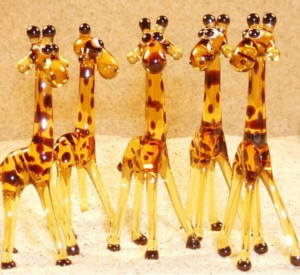
Communication that has gone awry is at the root of almost every cause of conflict or dysfunction.
The intended message lands very differently from the impact. In between are many judgements and stories made up about what the person “actually” meant in their communication. The message starts as one thing and gets added to, warped, diluted, and amended by those on the receiving end. Colour is added. Words are “loaded.” Interpretations are made. Influenced by our biases, this process plays a significant role in miscommunication, highlighting the importance of understanding different perspectives.
This is often done subconsciously, and almost always, it’s not checked. Then, the person on the receiving end reacts or responds to that message, that loaded message. And the spiral continues: conflict, misunderstandings, dysfunction.
You can test this for yourself. Ask a loved one what they heard in a conversation between yourself, and someone else and it will invariably be different to what you heard and what you reacted/responded to.. You’ll know this when you start saying “yes, I know they said that, but what they actually meant by that was..” or “but didn’t you hear the tone that they said that?” etc etc. We excuse and explain our biases and our interpretations.
So back to the giraffe ears. Where do they fit into all this?
Giraffe ears v Jackal Ears
In this fabulous post, Courage Lab has this to say:
“Marshall Rosenberg, the creator of Nonviolent Communication (NVC), spoke of listening with ‘giraffe ears’ versus listening with ‘jackal ears’. When we listen with jackal ears, we are highly alert to danger or threat – we listen for blame, attack, judgement. (And we will usually hear it, because most communication when in conflict is flawed, inferring judgement or blame of the other.) We then attack back or defend ourselves. The result is a breakdown in communication – the intended message is lost and we have missed an opportunity for understanding and compassionate connection.
In contrast, when we listen with giraffe ears*, we are alert to what’s most important to the speaker. Even if they are communicating in an attacking way, giraffe ears mean we try to remember that attacking others often comes from a place of fear, hurt, shame, vulnerability. So we stay curious and compassionate, and we listen more deeply to hear their pain, their hopes, their fears, their regrets, their needs, their intentions. (*You might be wondering why giraffes? Its because they have the largest heart of any land mammal – apparently they are about 2 feet long and weigh around 11kg!)
In difficult conversations, the real challenge is to turn our giraffe ears outwards and inwards simultaneously. To work hard to hear the feelings and needs being expressed – or inferred – by the speaker (perhaps clumsily) whilst listening with compassion to our own reactions in the moment – noticing our own feelings and needs without judging them.”
The Takeaway
What I love about this approach is the grace and compassion toward the speaker.
It acknowledges we don’t always say things beautifully eloquently, that we are often clumsy and unclear, and that, yes, sometimes we are defensive in our approach, both in tone and language.
But if the listener can listen, PAST all that; if they can listen for the message, the intent. If they can hear the true message beyond the jackal ears, then so much can be achieved.
Give it a go.. In your next tricky conversation, think about hovering way above the conversation (being on the balcony)
Five levels of listening podcast
Difficult Conversations – How to Discuss What Matters Most
Want more still…….
If the above has whetted your appetite, and you’re keen for more.. Here are some ideas:
Does leadership interest you? You can sign up to my FREE seven day “Be a Better Boss Challenge” by clicking here.
You can click here to buy my book on leading with courage.
Want to chat? Click here to get in touch.
Want some help in meeting your goals? Sign up to the permission to dream programme, by clicking here.
Want more to read? You can read any of the 300+ blog posts on this site, by clicking here.
Want to know more about my latest venture? Click here to be notified when our Neuro Nudges website goes live..
See you soon,


